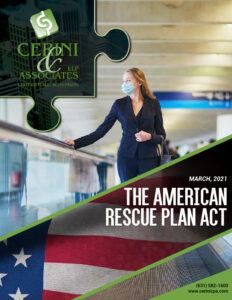Pension plans should be an important part of every business’ benefits package. Not only do they let business owners/executives and employees to set aside funds for their retirement, but they provide the added ability for companies to assist in the process and make contributions on behalf of their staff, to help them better position themselves for retirement. There are many different retirement plans available for companies to set-up, but one of the ones that offer businesses some of the most flexibility is the New Comparability Plan (“NCP”).
NCP Background:
A NCP is a profit-sharing plan strategically used by many companies to be able to direct pension contributions to specific individuals, programs, departments, class of workers, etc., within certain limitations. What this means is, if the plan doesn’t run into a non-discrimination issue, an employer can contribute a different percentage of each employee’s salary, providing a tremendous level of flexibility to the plan sponsor. This would allow companies to potentially direct pension contributions to more profitable departments, sales teams, deficit funded programs, etc.
Nondiscrimination Requirements:
NCP’s are “cross-tested” plans that are subject to nondiscrimination rules which requires the contribution on behalf of each plan participant to be actuarily projected, with interest, to retirement age and converted to an annual pension benefit expressed as a percentage of current compensation (the “equivalent benefit accrual rate”). Since the nondiscrimination testing considers resources at retirement age, an NCP plan tends to be more favorable to older individuals (such as company or organizational leadership), making it easier to meet nondiscrimination testing, even with little or no contributions going to certain employees.
In order for an NCP to use cross-testing, the IRS requires it to meet one of 3 requirements: (i) Broadly available allocation rates, (ii) provide a “gradual age or service schedule” or a “uniform target benefit allocation,” or (iii) satisfy a gateway condition. These requirements are very complex and should be discussed with your third-party administrator or plan consultant to ensure that you can meet these requirements.
Applicable Limitations:
As with all profit-sharing plans, the maximum employer contribution is limited to 25% of the eligible compensation paid to participants in the NCP. Eligible compensation levels change on an annual basis, so once again, you should discuss this with your accountant or third-party administrator.
Conclusion:
A NCP may be an attractive option for a company’s pension plan, depending on its employee demographics, spending patterns, and compensation structure. Some of the negative aspects that an employer must consider are:
- Start-up fees associated with the determination and establishment of an NCP
- Additional annual fees for cross-testing and top-heavy testing requirements
- Overall increased annual administrative fees
Even so, if properly designed, an NCP can provide a significant level of benefits and flexibility to a company, including:
- Flexibility with respect to pension contributions and the ability to target where those contributions go;
- Flexibility to determine contribution amounts on a year-to-year basis, depending on profits and business objectives
- A tax deduction for qualified pension contributions;
- Deferral of taxation of contributions, including earnings, until the funds are ultimately distributed
- NCP provisions can be added to an existing 401(k) plan
Plan sponsors should consider whether or not an NCP is the right option for them.

KENNETH R. CERINI, CPA, CFP, FABFA Managing Partner
Ken is the Managing Partner of Cerini & Associates, LLP and is the executive responsible for the administration of our not-for-profit and educational provider practice groups. In addition to his extensive audit experience, Ken has been directly involved in providing consulting services for nonprofits and educational facilities of all sizes throughout New York State in such areas as cost reporting, financial analysis, Medicaid compliance, government audit representation, rate maximization, board training, budgeting and forecasting, and more.





No comment yet, add your voice below!